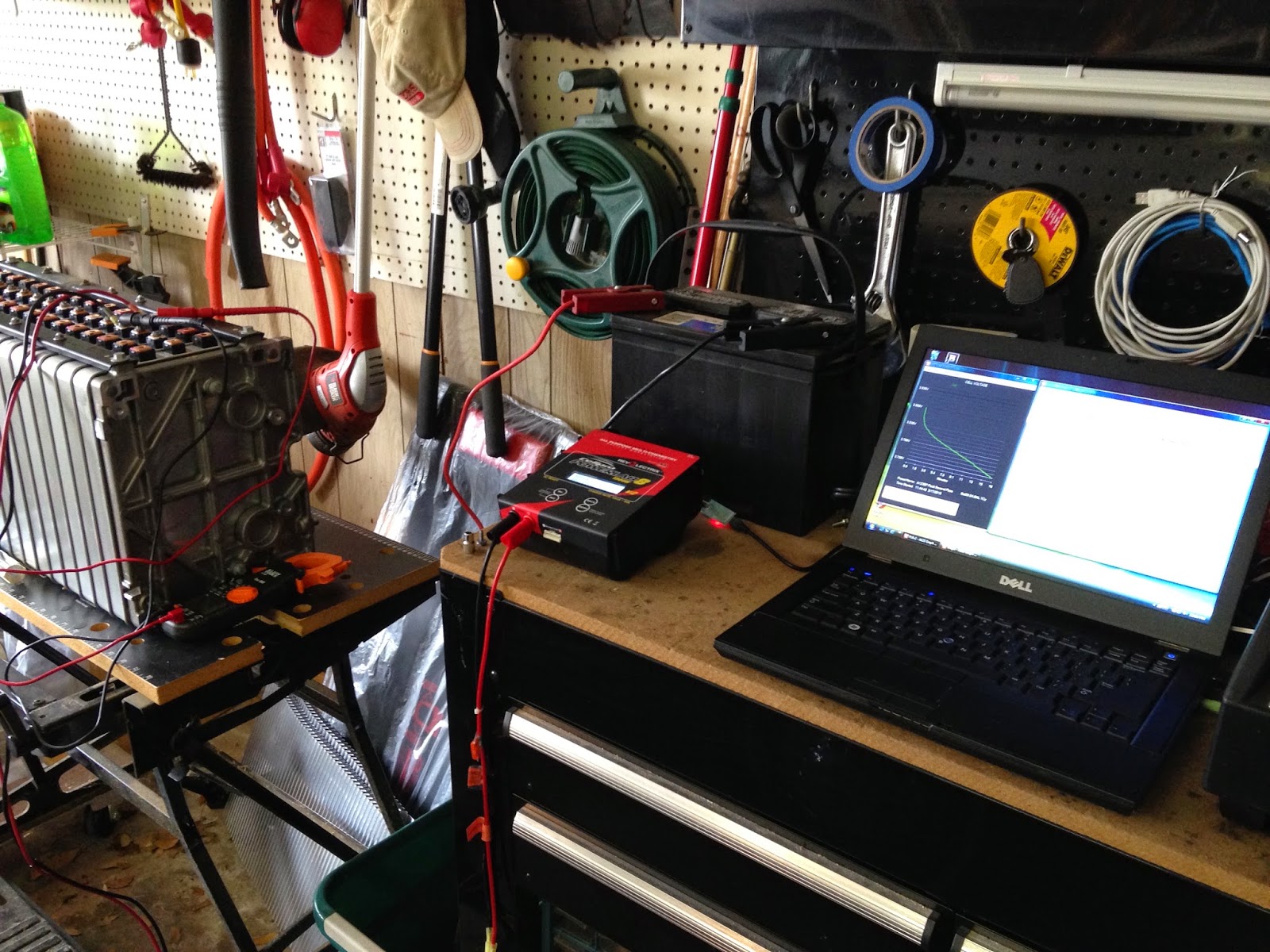 It took about a week, but I can happily say that there appears to be no damage to the affected battery cells! To review:
It took about a week, but I can happily say that there appears to be no damage to the affected battery cells! To review:The chain welded itself to the positive terminal of cell 21 and the negative terminal of cell 26, causing a dead short and fully discharging the six cells in between.
Here's what it looked like after the chain was pried off.
 The other side of the battery pack looks pretty toasty with the melted plastic and burnt off terminal bolt heads. In fact, the underlying cells were only slightly discharged compared to the other unaffected cells. It took a set of vice-grips to get the bolts loose, but once loose, they spun out easily and there was no damage to the terminals!
The other side of the battery pack looks pretty toasty with the melted plastic and burnt off terminal bolt heads. In fact, the underlying cells were only slightly discharged compared to the other unaffected cells. It took a set of vice-grips to get the bolts loose, but once loose, they spun out easily and there was no damage to the terminals! The chain took a beating and I think what happened was the chain welded across the six cells made the pack into a resistive arc welder. At a pretty high discharge rate the sparks were plenty spectacular, but didn't actually do all that much damage. It's good to know that these batteries can take this level of abuse with no thermal runaway.
The chain took a beating and I think what happened was the chain welded across the six cells made the pack into a resistive arc welder. At a pretty high discharge rate the sparks were plenty spectacular, but didn't actually do all that much damage. It's good to know that these batteries can take this level of abuse with no thermal runaway.
I described the recovery process in the last post, but after running the affected cells through multiple charge/discharge cycles I've learned a thing or two about these cells. The voltage increase during a charge is more linear than with LiFePo4 cells from CALB or Thundersky, but the capacity increase is heavily back-end loaded. From roughly 3.0 volts to 4.0 volts the cell gains 30-35 amp hours of capacity. Then between 4.0 and 4.2 volts including the constant voltage stage, an additional 25-30 aH of capacity is loaded. So these cells want to be charged to 4.2 volts.
 It's pretty doubtful that the TC Charger that I have will charge beyond its 389 volt max and if it did, it would be at the ragged edge of it's capabilities. Very recently, Jack Rickard, Mark Weisheimer and the team at EVTV have done the programming work to make the OEM grade 420 volt Lear chargers used in the Chevy Volt available and configurable for folks like me. I've ordered one, and that has triggered a rethinking of the configuration strategy for the Porsche.
It's pretty doubtful that the TC Charger that I have will charge beyond its 389 volt max and if it did, it would be at the ragged edge of it's capabilities. Very recently, Jack Rickard, Mark Weisheimer and the team at EVTV have done the programming work to make the OEM grade 420 volt Lear chargers used in the Chevy Volt available and configurable for folks like me. I've ordered one, and that has triggered a rethinking of the configuration strategy for the Porsche.
The Lear charger is liquid cooled, which accounts for the smaller size. After considering running coolant hoses from the front of the car to the back or setting up a separate charger cooling system in the back with its own radiator, pump, and catch tank, I decided to move the charger to the front and use the same plumbing as the motor and inverter. The batteries that were such a problem to fit under the hood will now occupy the back seat area. The DC/DC converter and 12 volt battery will also relocate to the front so there is some weight transfer to partially offset the battery move. That rear jump seat was pretty unusable anyway and this approach will make for a much cleaner installation.
Once all the dust settles, I'll be putting the TC Charger up for sale on eBay along with the Sachs clutch pack and any other leftover bits. If you're interested, please get in touch.
Once all the dust settles, I'll be putting the TC Charger up for sale on eBay along with the Sachs clutch pack and any other leftover bits. If you're interested, please get in touch.












